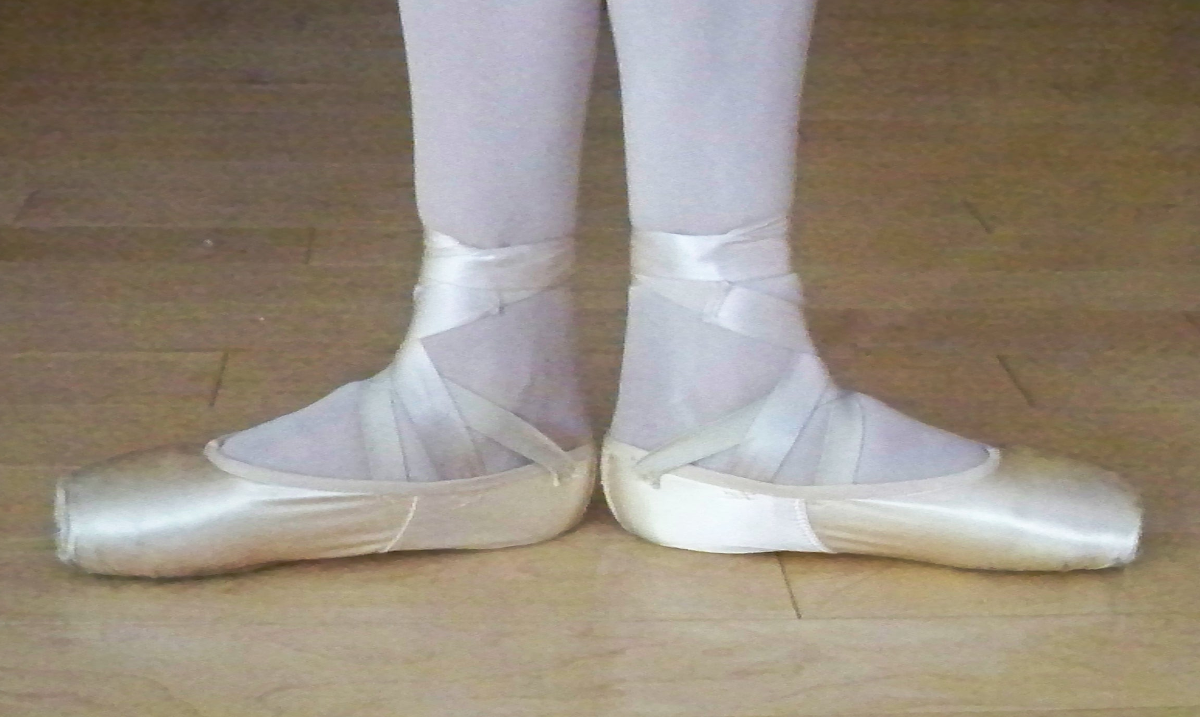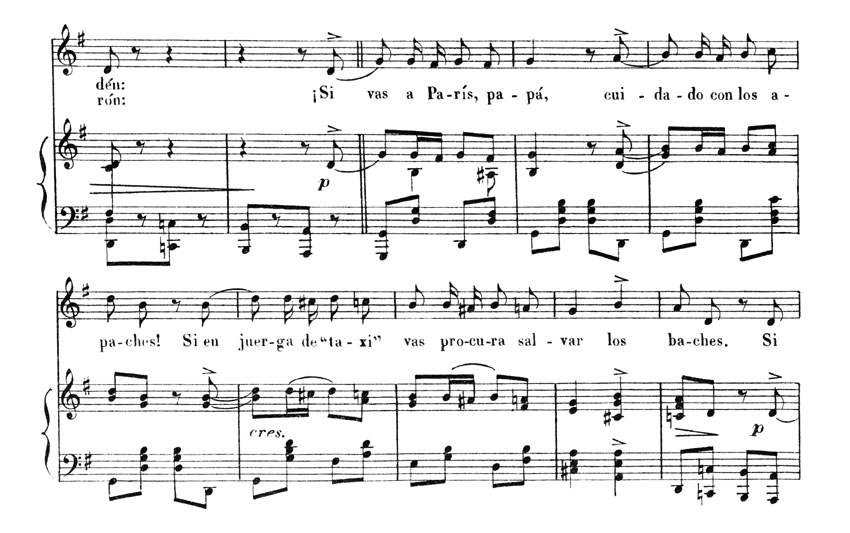|
Grapevine (dance Move)
The grapevine is a dance figure in partner dancing that shares a common appearance, with some variation, in ballroom, club, and folk dances. It includes side steps and steps across the support foot. The step is used, for example, in the foxtrot, polka, Electric Slide and hustle as well as in freestyle aerobics. Troy and Margaret West Kinney described it in 1914 as part of the One-Step. Sequence The most basic repeating sequence of steps may be; * Side step, * Step behind the support foot, * Side step, * Step across support foot. The sequence may start from any of the four steps and may break wherever it is convenient to move into another dance figure or in the opposite direction. The whole sequence is in the same direction. In some dances (e.g., Polka, Hustle, Electric Slide) it is an eight count figure, often split into two, mirroring each other and called "grapevine to the right" and "grapevine to the left". # Step right # Step left foot to the right, crossing i ... [...More Info...] [...Related Items...] OR: [Wikipedia] [Google] [Baidu] |
Dance Figure
Dance moves or dance steps (more complex dance moves are called dance patterns, dance figures, dance movements, or dance variations) are usually isolated, defined, and organized so that beginning dancers can learn and use them independently of each other. However, more complex movements are influenced by musicality and lyrical relevance to express emotions or refer to a message. Dance moves tend to emphasize the concepts of lead and follow and connection. In most cases, dance moves by themselves are independent of musicality, which is the appropriateness of a move to the music (for a notable exception, see Bharatanatyam). Generally, they are memorized in sets of eight counts. Also there are two different movements: concrete and abstract. These two movements show time, space, relationship, quality and focus. For example, relationship could describe the movement of two or more different dancers. The names of moves may be somewhat arbitrary and vary from person to person and city to ... [...More Info...] [...Related Items...] OR: [Wikipedia] [Google] [Baidu] |
Electric Slide
The Electric (better known as The Electric Slide) is a four wall line dance. Choreographer and dancer Richard L. "Ric" Silver claims to have created the dance in 1976. Dance popularity is sometimes attributed to its setting to Marcia Griffiths and Bunny Wailer's song " Electric Boogie", which was written and recorded for the first time in December 1982. There are several variations of the dance. The original choreography has 22 steps, but variants include the Freeze (16-step), Cowboy Motion (24-step), Cowboy Boogie (24-step), and the Electric Slide 2 (18-step). The 18-step variation became popular in 1989 and for ten years was listed by ''Linedancer Magazine'' as the number-one dance in the world. The original dance was choreographed to be danced in two lines facing each other and in the course the opposite dancers circle each other.''LineDancer Magazine''June 2003 p. 9. Controversy In 2007, Silver filed DMCA-based take-down notices to YouTube users who posted videos of peop ... [...More Info...] [...Related Items...] OR: [Wikipedia] [Google] [Baidu] |
Mayim Mayim
Mayim Mayim (, "water, water") is an Israeli folk dance, danced to a song of the same name. It has become notable outside the Israeli dancing community and is often performed at international folk dance events. History The dance was created in 1937 for a festival to celebrate the discovery of water in the desert after a seven-year search. The choreographer was Else I. Dublon. The dance is sometimes known as "Ushavtem Mayim", after the first words of the lyrics, or simply just "Mayim", but "Mayim Mayim" is the original and most common name. The movement to the first four counts has become known as the "Mayim step" and is similar to the grapevine step found in other forms of dance. "Mayim Mayim" is done in a circle formation, facing the center through most of the dance, and holding hands except when clapping. The song The music for Mayim Mayim was composed by Emanuel Pugashov Amiran with lyrics taken from the Book of Isaiah, chapter 12 verse 3, "Joyfully shall you draw water f ... [...More Info...] [...Related Items...] OR: [Wikipedia] [Google] [Baidu] |
Dip (dance Move)
Dips are common to many partner dance styles (Tango, Lindy Hop, Salsa, Ballroom dances), as well as couple's Disco. Characteristics of a dip include: * weight-sharing. Usually the follower supports part (or all) of her weight by the supporting leg bent at the knee. The lead frequently uses one foot to point and thus is supporting his weight, and part of the follower's weight, on one bent knee; * the free leg of the follower is usually straight; * dancers' centres go lower than when standing; * "holding" (pausing) to accentuate the "floor-stopping" move; Some dance styles distinguish between sits, dips, and drops; as a general rule, the difference is the degree to which the base (usually the leader) ends up responsible for the mass and balance of the flyer (usually the follower). Where a distinction is made, it's usually a continuum from least to most responsibility, with sits being the least, drops the most, and dips in between. Difficulty of the dip moves varies, with some ... [...More Info...] [...Related Items...] OR: [Wikipedia] [Google] [Baidu] |
Feet Positions
The positions of the feet in ballet is a fundamental part of classical ballet technique that defines standard placements of feet on the floor. There are five basic positions in modern-day classical ballet, known as the first through fifth positions. In 1725, dancing master Pierre Rameau credited the codification of these five positions to choreographer Pierre Beauchamp. Two additional positions, known as the sixth and seventh positions, were codified by Serge Lifar in the 1930s while serving as Ballet Master at the Paris Opéra Ballet, though their use is limited to Lifar's choreographies. The sixth and seventh positions were not Lifar's inventions, but revivals of positions that already existed in the eighteenth century, when there were ten positions of the feet in classical ballet. Five basic positions The first basic position requires the feet to be flat on the floor and turned out (pointing in opposite directions as a result of rotating the legs at the hips). First positi ... [...More Info...] [...Related Items...] OR: [Wikipedia] [Google] [Baidu] |
One-Step
The One-Step was a ballroom dance popular in social dancing at the beginning of the 20th century.Claude Conyers. 'One-step', in ''Grove Music Online'' (2001) Troy Kinney writes that One-Step originated from the Turkey Trot dance, with all mannerisms of the latter removed, so that "of the original 'trot' nothing remains but the basic step". Troy Kinney, Margaret West Kinney (1914) "The Dance: Its Place in Art and Life" (public domain, digitized by Google Google LLC (, ) is an American multinational corporation and technology company focusing on online advertising, search engine technology, cloud computing, computer software, quantum computing, e-commerce, consumer electronics, and artificial ...) The One-Step included the following basic figures (and a number of more advanced ones): *The Castle Walk (invented and introduced by Mr. and Mrs. Vernon Castle). *The Turn is a walking step, pivoting on one foot to change direction. The right foot comes from the precedin ... [...More Info...] [...Related Items...] OR: [Wikipedia] [Google] [Baidu] |
Freestyle Aerobics
Aerobics is a form of physical exercise that combines rhythmic aerobic exercise with stretching and strength training routines with the goal of improving all elements of fitness (flexibility, muscular strength, and cardio-vascular fitness). It is usually performed to music and may be practiced in a group setting led by an instructor ( fitness professional). With the goal of preventing illness and promoting physical fitness, practitioners perform various routines. Formal aerobics classes are divided into different levels of intensity and complexity and will have five components: warm-up (5–10 minutes), cardiovascular conditioning (25–30 minutes), muscular strength and conditioning (10–15 minutes), cool-down (5–8 minutes) and stretching and flexibility (5–8 minutes). Aerobics classes may allow participants to select their level of participation according to their fitness level. Many gyms offer different types of aerobic classes. Each class is designed for a certain level ... [...More Info...] [...Related Items...] OR: [Wikipedia] [Google] [Baidu] |
Hustle (dance)
The Hustle is a catch-all name for some disco dances which were extremely popular in the 1970s. Late 1970s, Bump, Hustle, Watergate and Spank were popular. It mostly refers to the unique partner dance done in nightclubs to disco music. Hustle has steps in common with Mambo and Salsa and basic steps are somewhat similar to Euro dance style Discofox, which emerged at about the same time and is more familiar in various European countries. Modern partner hustle is sometimes referred to as New York hustle, however, its original name is the Latin hustle. A source for research on the origins of the Hustle is a book written by Willie Estrada, one of the original pioneers of the Latin Hustle, ''The Dancing Gangsters of the South Bronx (Rise of the Latin Hustle)''. History Latin Strut Joe Bataan recorded a song called "Latin Strut" after visiting a Bronx Club called the "310 1/2" in 1973 and seeing the first version of a 6-step dance called "The Hustle" this new Latin rhythmic sound h ... [...More Info...] [...Related Items...] OR: [Wikipedia] [Google] [Baidu] |
Polka
Polka is a dance style and genre of dance music in originating in nineteenth-century Bohemia, now part of the Czech Republic. Though generally associated with Czech and Central European culture, polka is popular throughout Europe and the Americas. History Etymology The term ''polka'' referring to the dance is believed to derive from the Czech words "půlka", meaning "half-step". Czech cultural historian Čeněk Zíbrt attributes the term to the Czech word ''půlka'' (half), referring to both the half-tempo and the half-jump step of the dance.Čeněk Zíbrt, "Jak se kdy v Čechách tancovalo: dějiny tance v Čechách, na Moravě, ve Slezsku a na Slovensku z věků nejstarších až do nové doby se zvláštním zřetelem k dějinám tance vůbec", Prague, 189(Google eBook)/ref> This name has been changed to "Polka" as an expression of honour and sympathy for Poland and the Poles after the November Uprising 1830-1831. "Polka" meaning, in both the Czech and Poli ... [...More Info...] [...Related Items...] OR: [Wikipedia] [Google] [Baidu] |
Partner Dancing
Ballroom dancers performing the tango. file:dance-At-Bougival.jpg">upPartner dance, '' Pierre-Auguste_Renoir.html" ;"title="Dance at Bougival'' by Pierre-Auguste Renoir">Dance at Bougival'' by Pierre-Auguste Renoir, 1883 Partner dances are dances whose basic choreography involves coordinated dancing of two partners. As such it occupies a middle ground between Solo dance, individuals dancing alone or individually in a non-coordinated manner, and groups of people dancing simultaneously in a coordinated manner. United States dance history Prior to the 20th century, many ballroom dance and folk dances existed in America. As jazz music developed at the start of the 20th century, Black American communities in tandem developed the Charleston and eventually the Lindy Hop by the end of the 1920s. Many cities had regular local competitions such as the Savoy Ballroom which accelerated the development and popularization of the dance. The dances were introduced to wider public through mo ... [...More Info...] [...Related Items...] OR: [Wikipedia] [Google] [Baidu] |
Foxtrot (dance)
The foxtrot is a smooth, progressive dance characterized by long, continuous flowing movements across the dance floor. It is danced to big band (usually vocal) music. The dance is similar in its look to waltz, although the rhythm is in a time signature instead of . Developed in the 1910s, the foxtrot reached its height of popularity in the 1930s and remains practiced today. History The dance was premiered in 1914, quickly catching the eye of the husband and wife duo Vernon and Irene Castle, who gave the dance its signature grace and style. The origin of the name of the dance is unclear, although one theory is that it took its name from its popularizer, the vaudevillian Harry Fox. Two sources, Vernon Castle and dance teacher Betty Lee, credit African American dancers as the source of the foxtrot. Castle saw the dance, which "had been danced by negroes, to his personal knowledge, for fifteen years, ta certain exclusive colored club". W. C. Handy ("Father of the Blues") ... [...More Info...] [...Related Items...] OR: [Wikipedia] [Google] [Baidu] |
Ballroom Glossary
This is a list of dance terms that are not names of dances or types of dances. See List of dances and List of dance style categories for those. This glossary lists terms used in various types of ballroom partner dances, leaving out terms of highly evolved or specialized dance forms, such as ballet, tap dancing, and square dancing, which have their own elaborate terminology. See also: * Glossary of ballet terms * Glossary of dance moves Abbreviations *3T – Three Ts *CBL – Cross-body lead *CBM – Contra body movement *CBMP – Contra body movement position *COG – Center of gravity *CPB – Center point of balance *CPP – Counter promenade position *DC – Diagonally to center *DW – Diagonally to wall *IDSF – International DanceSport Federation *IDTA – International Dance Teachers Association *ISTD – Imperial Society of Teachers of Dancing *J&J – Jack and Jill *LOD – Line of dance *MPM – Measures per minute *NFR – No foot ... [...More Info...] [...Related Items...] OR: [Wikipedia] [Google] [Baidu] |








